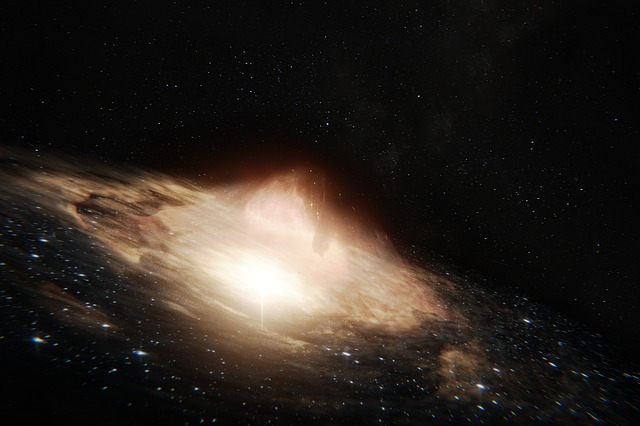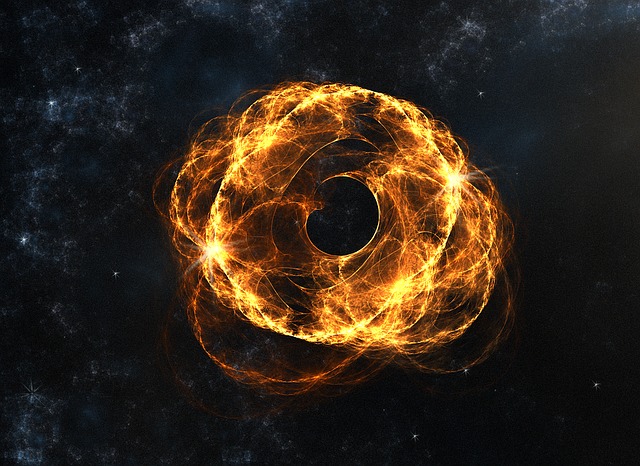*This post may contain affiliate links. This means we may make a commission if you purchase an item using one of our links*
Quasars and Blazars are one in the same as the latter is simply a subcategory of a quasar. The main thing that differentiates them is the direction at which they point where blazars specifically propel jet particles in the direction of Earth whereas your average quasar’s jet particles are only slightly angled towards Earth.
Although the above is the main difference between these two cosmic entities, there are a few more factors that separate them also so continue reading if you want more information on this.
What Is A Quasar?
Table of Contents

Quasars are extremely bright celestial objects powered by supermassive black holes, found in the center of galaxies. They tend also to be referred to as an active galactic nucleus or AGN for short.
Quasars were initially called quasi-stellar radio sources however, this name isn’t entirely consistent with the type of waves they generate as only around 10 percent of all quasars that have been discovered produce strong radio waves.
As for how bright they can be, quasars have been observed to exceed levels that are upwards of 100 times the brightness of the galaxies that hold them.
Although not an absolute, many scientists believe these bright objects are formed when light escapes at the edge of a supermassive black hole just before reaching its event horizon.
Some light gets drawn in whilst other particles jet out at a tremendous pace, which is how the erratic and powerful light of a quasar forms.
At this moment in time, we have discovered around 750,000 unique quasars extending across various ages, with the farthest from us roughly 13 billion light years away.
Therefore, not only are these enigma’s extraordinarily powerful but, they can even be used as time capsules to observe how our universe came to be, relatively close to when the theorised big bang occurred.
What Is A Blazar?

Blazars are a subcategory of quasars, meaning they are one variation of the active galactic nucleus surrounding supermassive black holes.
What differentiates them from other quasars is that they specifically propel high powered jet particles towards Earth.
These jet particles travel at the speed of light towards us, and as was discovered by the IceCube instrument, these jet particles allowed us to understand a new particle, falling under the lepton classification, neutrinos.
Much like quarks that make up the majority of matter around us, neutrinos are another crucial particle that allows our universe to be as we know it.
Blazars are very similar to a quasar in the sense that they need a bucket load of material build up at the center of a supermassive black hole to form where an extremely bright excretion disk surrounding the stupendously large black hole will eject objects at relativistic speeds towards us, essentially at the speed of light.
Blazars are also some of the oldest resources out in the universe as they allow us to observe the goings on of interstellar objects, millions to billions of years in the past.
Whether it be through the x-rays or gamma rays projected our way or even through the gravitational waves or just via photons it produces.
In essence just like any other quasar, they will produce arguably the brightest luminosity in the cosmos, last for roughly 10 million years, and angled in such a way that the jet particles propelled are towards Earth.
As a result of this angular disposition from blazars, which isn’t a very normal occurrence, blazars are in turn very rare. That’s why at this moment in time we have only discovered 5.
Similarities Between Quasars And Blazars
The two are very much the same when it comes to how they’re formed, the luminosity they produce, and the fact they both surround supermassive black holes, acting as active galactic nuclei.
Blazars are simply a subcategory of a quasar therefore, they should last 10 million years, they likely burn at the 100+ billion degree Celsius range, and shine so bright that entire galaxies cannot match them.
As quasars are amongst the oldest observable entities in the universe, it only makes sense that blazars will follow suit here too.
Differences Between Quasars And Blazars
Despite essentially being one in the same, there are a few differences between both entities with the main one being that blazars eject light and other particles in the direction of Earth (at the speed of light on most occasions) whilst quasars are angled slightly towards Earth when propelling these ionized particles.
As a result of being pointed directly towards us, a blazar may come across as the brighter entity but, in reality, they would be roughly the same brightness if all factors were equal.
The entire quasar catalog that has been observed accumulates to roughly 750,000 quasars whilst at this moment in time we have only discovered 5 early gamma-ray blazars, making them the more scarce of the two.
Summary
Quasars and blazars are one in the same with the only differentiating factor being the angle at which they point towards Earth. quasars only point towards Earth at a slight angle whilst Blazars point directly at it, jetting particles in relativistic speed around the speed of light at us,
Both or active galactic nuclei that surround supermassive black holes although, the blazar variant isn’t as commonly observed.

